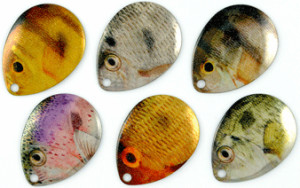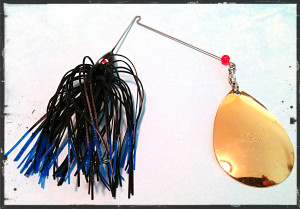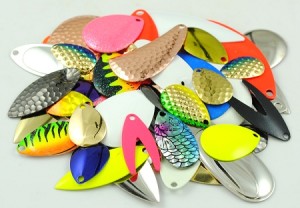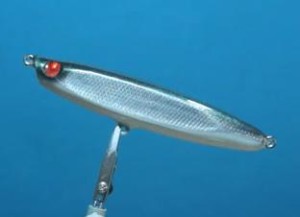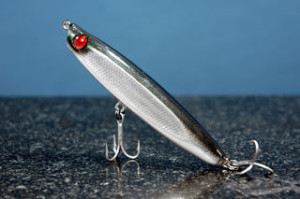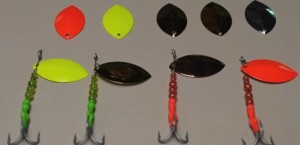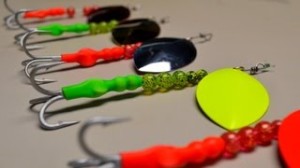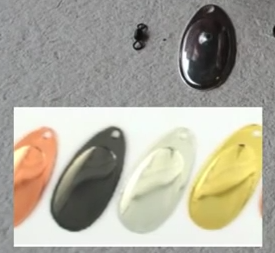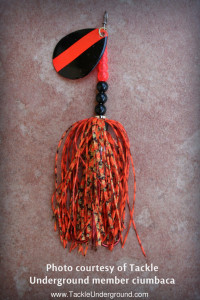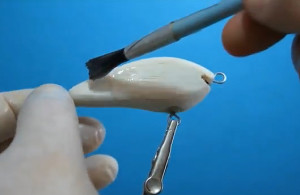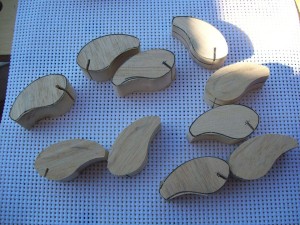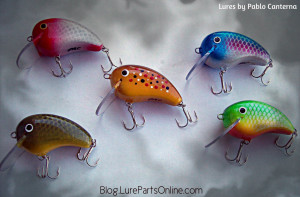Choosing The Right Blades for Your Spinnerbait
When it comes to choosing the right blades for your spinnerbait, it can sometimes seem overwhelming.
There are hundreds of different sizes and styles available. When you throw all of the various colors and finishes into the mix, now you’re talking about thousands of possibilities!
Spinnerbaits are one of the most versatile baits that you can make when it comes to catching bass and a multitude of other species. And nobody can argue with the fact that you could throw just about any blades on a spinnerbait and it will catch some fish.
But how do you squeeze the most potential out of your spinnerbait? How do you make it the most effective it can be for specific conditions? It pays big dividends to take the time to understand how different blades can change the way your bait behaves and attracts fish.
Different styles and blade shapes create different levels of vibration and flash under the water. This can increase or decrease the ability of a fish to find your lure. And all of this is based on water clarity, light conditions, water depth and a host of other factors.
Spinnerbait blade colors and finishes will also change how well a spinnerbait can be seen. Nickel, gold, copper and brass are some of the most popular finishes and they’ve been around long enough to be proven fish catchers.
Painted blades and blades with photographic finishes have emerged onto the market in recent years. They’ve made a pretty big splash in the marketplace, no pun intended. These blades allow the angler to add color or realism to their bait. This sets them apart from the ordinary spinnerbaits fished by the vast majority of anglers.
Sometimes a simple change in blade color can make all the difference in the world and change a slow outing into one that you’ll remember for years to come. Different colors will offer better visibility in varying water clarity.
And then you throw all of the different styles and shapes into the mix. You have Colorado blades, willow leaf blades, Indiana blades, chopper blades, magnum willow blades, serrated willow blades, royal blades, whiptail blades, doc shelton blades and many others. Are you thoroughly confused and bewildered yet?
So how do you take this vast selection and make sense of it? How do you know which blade shape and color will work best on your favorite lake under which conditions? How do you take all of this and digest it and make informed decisions when choosing the right blades for your spinnerbait?
That’s a great question! And it’s one that we’re going to answer for you, right here, right now. We found an awesome video that was put together by tournament angler and pro guide, Curt Snow, that explains the various factors to take into consideration and helps you understand spinnerbait blade selection much better.
Curt explains how blade shape affects the vibration of your bait, as well as the depth a bait will run with the various blade styles. He also discusses water clarity and which blade style and color works best under specific conditions.
So grab a notebook and pencil and enjoy the video, as you get over 20 years worth of angling knowledge packed into one 15 minute video.
To check out our huge selection of spinner blades, Click Here
For our premium quality spinnerbait heads, Click Here
For a selection of top-quality spinnerbait hardware, Click Here
And, as always, if you enjoyed this article, please be sure to share it with others!

